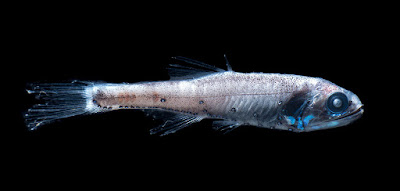one 3 fishing rods | fishing rod for tuna
Fishing Rod
A fishing rod is a long, flexible rod used to catch fish. In its simplest, a fishing rod is a simple stay or pole attached to a line ending in a hook (formerly known as an viewpoint, hence the term angling). The length of the rod can vary between 2 and 20 feet (0. 61 and 6th. 10 m). To draw in fish, bait or lures are impaled on one or even more hooks attached to the line. The line is generally stored on a fishing reel which reduces tangles and assists in landing a fish.
Traditionally rods are manufactured from bamboo, while contemporary supports are usually made from fibreglass or perhaps carbon fibre. In contrast with netting, which are usually used in subsistence and commercial fishing, sportfishing rods are more often used in recreational fishing and competitive casting. Fishing rods can be found in many sizes, actions, diets and configurations depending on whether they are to be used for small , channel or large fish or in different fresh or sodium water situations. Various types of fishing rods are designed for specific types of fishing. Fly rods are used to cast unnatural flies, spinning rods and bait casting rods are designed to cast baits or fishing lures. Ice fishing rods are made to fish through small openings in ice covered waters. Trolling rods are designed to move bait or lures lurking behind moving boats.
The art of fly fishing took a great leap forward after the English Civil Struggle, where a newly found concern in the activity left its tag on the many books and treatises that were written about them at the time. The renowned policeman in the Parliamentary army, Robert Venables, published in 1662 The Experienced Angler, or Angling improved, being a general task of angling, imparting many of the aptest ways and best experiments for the acquiring of most sorts of fish in pond or river.[1] Compleat Angler was written by Izaak Walton in 1653 (although Walton prolonged to add to it for a 1 / 4 of a century) and explained the fishing in the Derbyshire Wye. It was a special event of the art and spirit of fishing in consignée and verse; six verses were quoted from Steve Dennys's earlier work. Another part to the book was added by Walton's friend Charles Cotton.[1]
The 18th century was mainly an era of consolidation of the techniques created in the previous century. Running jewelry began to appear along the angling rods, which gave anglers greater control over the ensemble line. The rods themselves were also becoming increasingly sophisticated and specialized for different roles. Jointed rods became common from the middle of the century and bamboo bedding and sheets came to be used for the top section of the rod, giving it a much larger strength and flexibility.
The industry also became commercialized - rods and tackle were sold at the haberdashers store. After the Great Fire of London in 1666, artists moved to Redditch which became a centre of creation of fishing related items from the 1730s. Onesimus Ustonson established his trading store in 1761, and his establishment remained as a market leader for the next century. He received a Royal Warrant via three successive monarchs starting with King George IV.[2]
Theoretically, an ideal rod should little by little taper from butt to tip, be tight in all its joints (if any), and possess a smooth, progressive taper, with out 'dead spots'. Modern style and fabrication techniques, along with advanced materials such as graphite, boron and fiber-glass composites as well as stainless steel(see Emmrod)- have allowed fly fishing rod makers to tailor both shape and action of fishing rods for increased casting distance, accuracy, and fish-fighting qualities. Today, sport fishing rods are identified by their weight (meaning the excess fat of line or lure required to flex a fully filled rod) and action (describing the speed with which the fishing rod returns to its natural position).
Generally there are three types of rods applied today graphite, fiberglass, and bamboo rods. Bamboo fishing rods are the heaviest of the 3, but people still put it to use for its feel. Fiberglass rods are the heaviest of the brand-new chemically-made material rods. They are mostly popular with the new and young anglers, as well as fishermen who cannot afford the generally more expensive graphite rods. They are additionally found among those fishers that fish in strong areas such as on rubble or piers where slamming the rod on hard objects is a greater opportunity. This may potentially cause damage, making a fiberglass fly fishing rod preferable for some anglers for the higher durability and value compared to graphite rods. Modern-day most popular rod is often graphite for its light weight attributes and its ability to allow for additional and more accurate cast.[7][8] Graphite equipment tend to be more sensitive, allowing you feel bites from seafood easier.
Modern fishing supports retain cork as a typical substance for grips. Cork can be light, durable, keeps nice and tends to transmit fishing rod vibrations better than synthetic components, although EVA foam is usually used. Reel seats tend to be of graphite-reinforced plastic, aluminium, or wood. Guides can be bought in steel and titanium having a wide variety of high-tech metal metal inserts replacing the classic agate inserts of earlier the fishing rod.
Back- or butt-rests could also be used with modern fishing equipment to make it easier to pull big fish off the water. These are fork-like supports that help keep the rod in position, providing power and counteracting tensions the effect of a caught fish.





Comments
Post a Comment